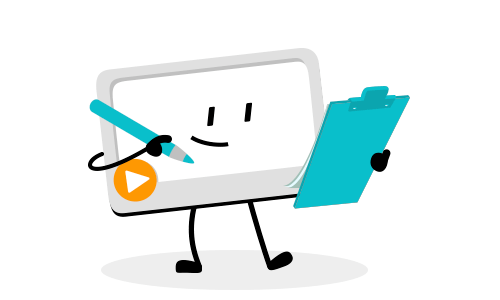How To Create An Effective Storyboard, Even If You’re Not An Artist
In an era where online learning is becoming commonplace, video content is being utilized to teach an ever-increasing number of people. As a result, storyboarding has become a vital step in preparing online educational content that’s enjoyable to look at and more engaging to watch.
You may be wondering, what is a storyboard?
Well, we’re going to explain what storyboards are and why they’re important, and we’re going to guide you through a step-by-step process of making your own. And no, you don’t need to be an artist or have any artistic training to do so.
The Basics of Storyboards
Storyboards are a selection of panels with drawings that depict exactly what shots are needed for each scene of your video. The result tends to look like a cartoon or graphic novel layout.

Although you may want to skip the storyboarding stage and jump straight into recording, there’s a high chance you will regret it later.
Storyboards are important for saving time and money as they can help you uncover potential problems with your video ideas before you attempt to produce them. They also help translate the idea in your head into a moving visual by providing an in-between step, as well as aiding with effectively explaining your ideas to others.
Creating a storyboard will help you organize your scenes to ensure that your story both flows and fits into your video’s desired timeframe. Your storyboard will determine if your storyline makes sense and what direction your video will take.
Once you begin filming or animating, it’s useful to look back at your storyboard to determine how to set up your next scene.
Your storyboard can also help you decide on the aesthetic of your video by planning what is necessary for each frame. Fortunately, storyboards don’t need to be complicated and you can easily make one without having to hire a storyboard artist.
How to Make a Storyboard
The following five points will guide you through creating your storyboard from start to finish.
1. Script:

Before you can start creating a storyboard, you will need to write a script for your video. Your script should include the narration, punchlines, dialogue between characters and any information or statistics you may want to include. Your script can also describe potential scenes so that they will be easier to visualize.
2. Aspect Ratio:
In order to plan your scenes correctly, you need to make sure each panel has the same, or a similar enough ratio as your video in order to plan the visuals correctly. The most common aspect ratio for online videos is 16:9. If you use our templates, the sizing will get done automatically, but you still need to make sure that what you’re planning won’t look cluttered or confusing.
3. Sketch:

The most significant part of this stage is simply mapping out where and when things will be in frame. You don’t need to be an artist to layout your scenes as you can use stick figures to express your ideas. This rough style of storyboard sketching, called “scamping”, is quite common, so you don’t need to worry about creating impressive storyboards. If you’re feeling particularly nervous about sketching your ideas, drawing is not necessary at all. You can find images online or magazine cut-outs to create layouts. When adding backgrounds to your scenes, you can use simple blocks of color or tone.
4. Arrows:
Once you have sketched and marked out your panels, it’s time to add arrows to your scenes. These arrows will show what movements need to take place in each scene. The arrows will indicate whether elements must move left, right, or away from the camera, and so on. Without this tool, it may be confusing to know how each panel is meant to progress as a video scene.
5. Camera Angles:

Just as your arrows indicate how characters will move, you must also indicate how your camera will move and what angle or position you will be filming from. If you don’t feel comfortable trying to draw this, you can write down the camera actions with the rest of your notes. Consider what your camera should focus on, what angle it’s at and whether it’s a close-up or wide shot.
6. Notes:
To make sure your storyboard is clear, you must include a section of notes underneath each panel. Here you will briefly describe what happens in the scene and provide cues for elements such as transcription text, sound effects, location description, camera actions, or special effects. Last, but not least, it is vital that you number your panels so that you don’t get confused during production.
How Storyboards Will Help Create Videos With simpleshow’s video maker
simpleshow’s video maker provides various possibilities to bring your video to life. You can choose from different storylines and simpleshow video maker will provide suitable animations for each scene to automatically produce your explainer video.
Make Your Storyboard

It’s now time to get a start on your own storyboards, so grab a pen and paper or download one of the many storyboard templates available online.
Remember not to stress too much about creating a storyboard that looks amazing, this is only a step in your planning process and doesn’t need to take too long. The main goal is to be creative and experiment with different ways to display your scenes to communicate your content so that it’s entertaining and engaging.